Abstract
The influence of calcium on fibrinolysis in vitro has been studied. In the absence of inhibitors, fibrinolytic activity is enhanced by calcium. In whole blood the inhibitory effect of calcium on fibrinolysis can be explained by its effect on the inhibitors present. Anti-activator is dependent on the presence of calcium for its formation, although calcium has no further influence on its action. Antiplasmin activity is enhanced by the presence of calcium.
Full text
PDF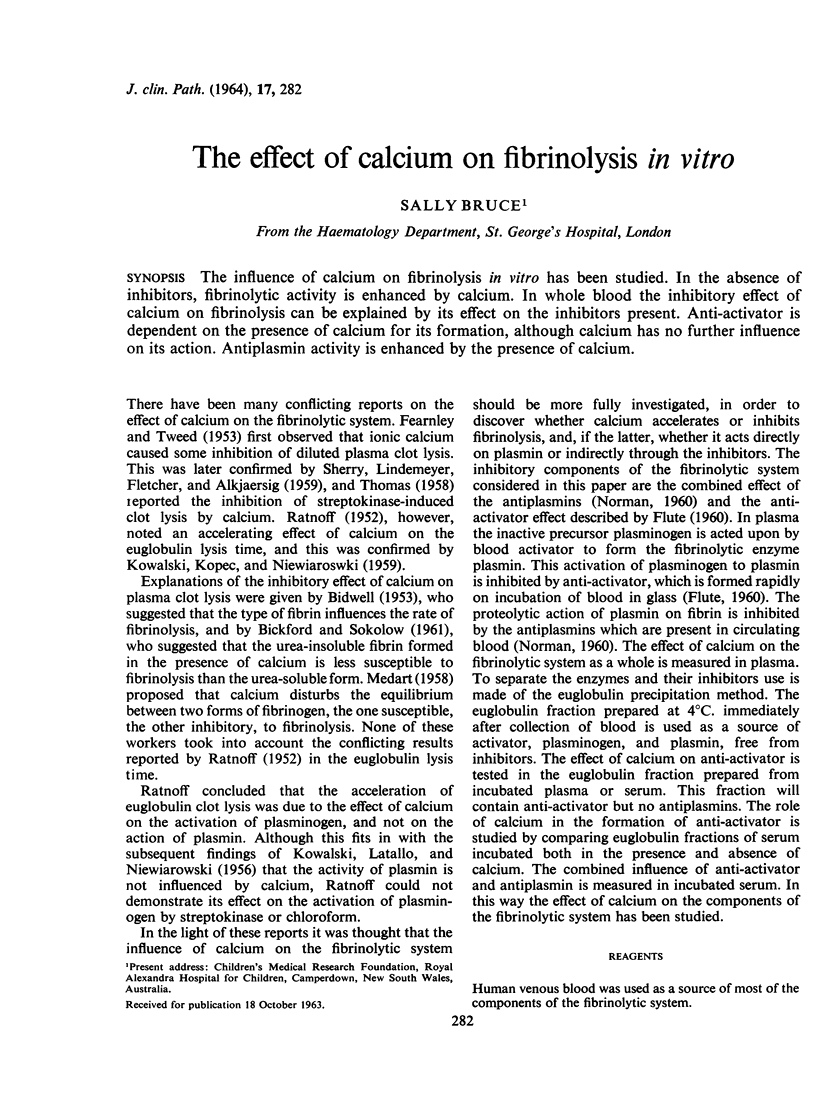
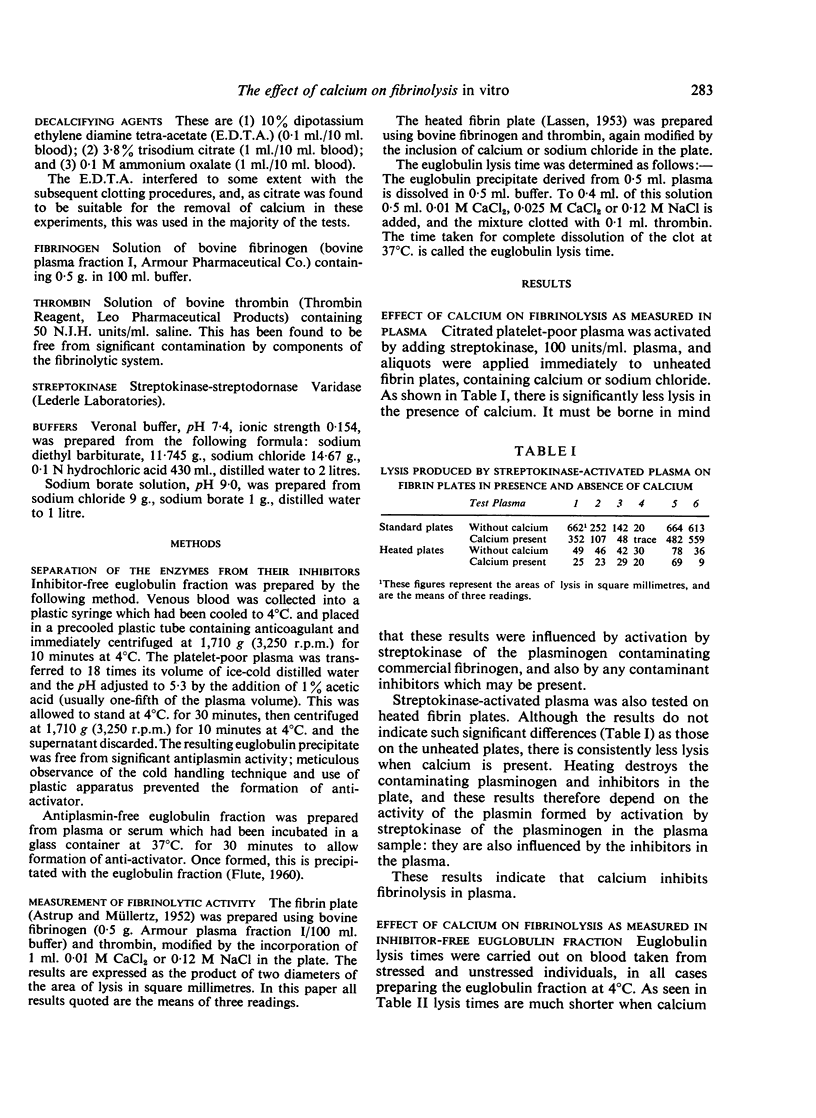
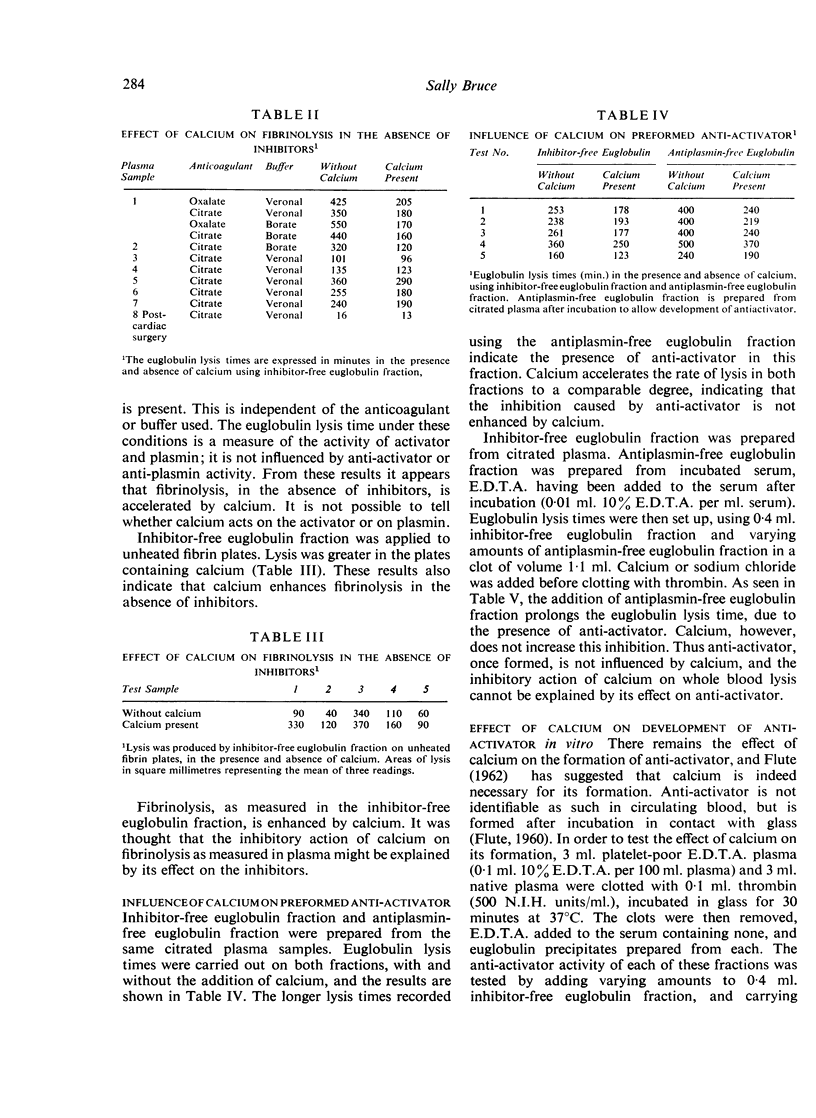
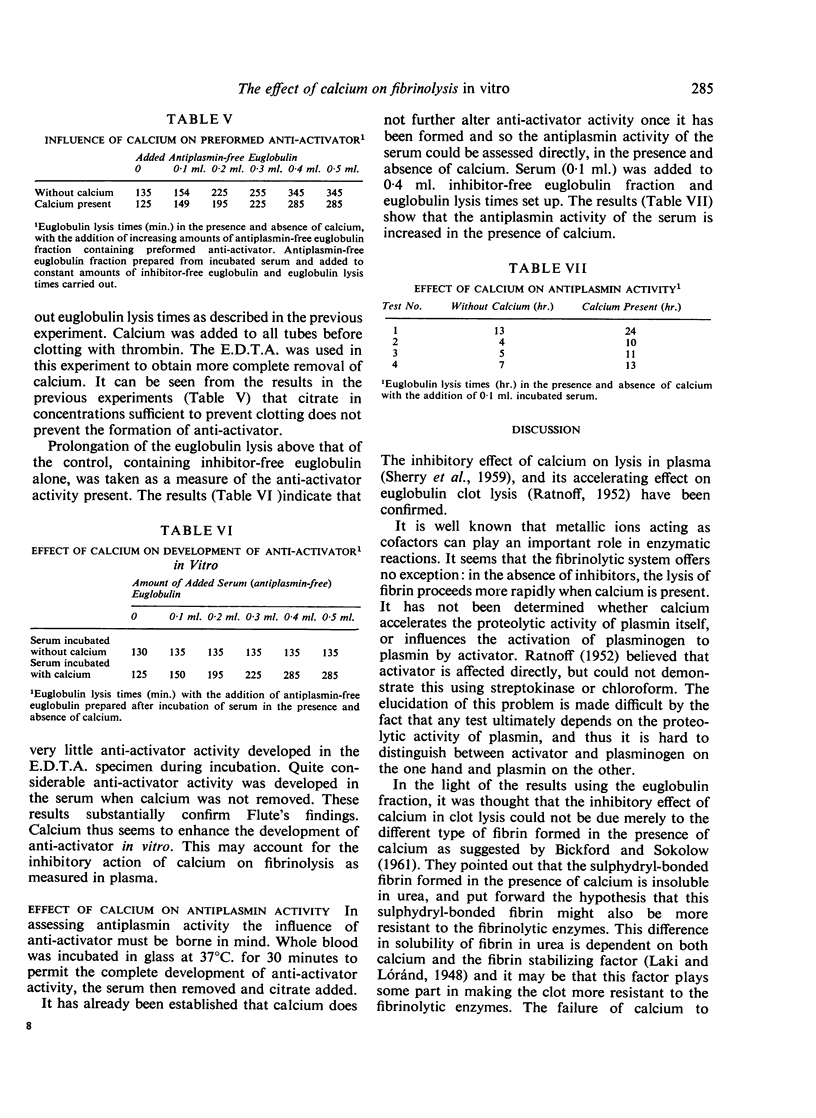
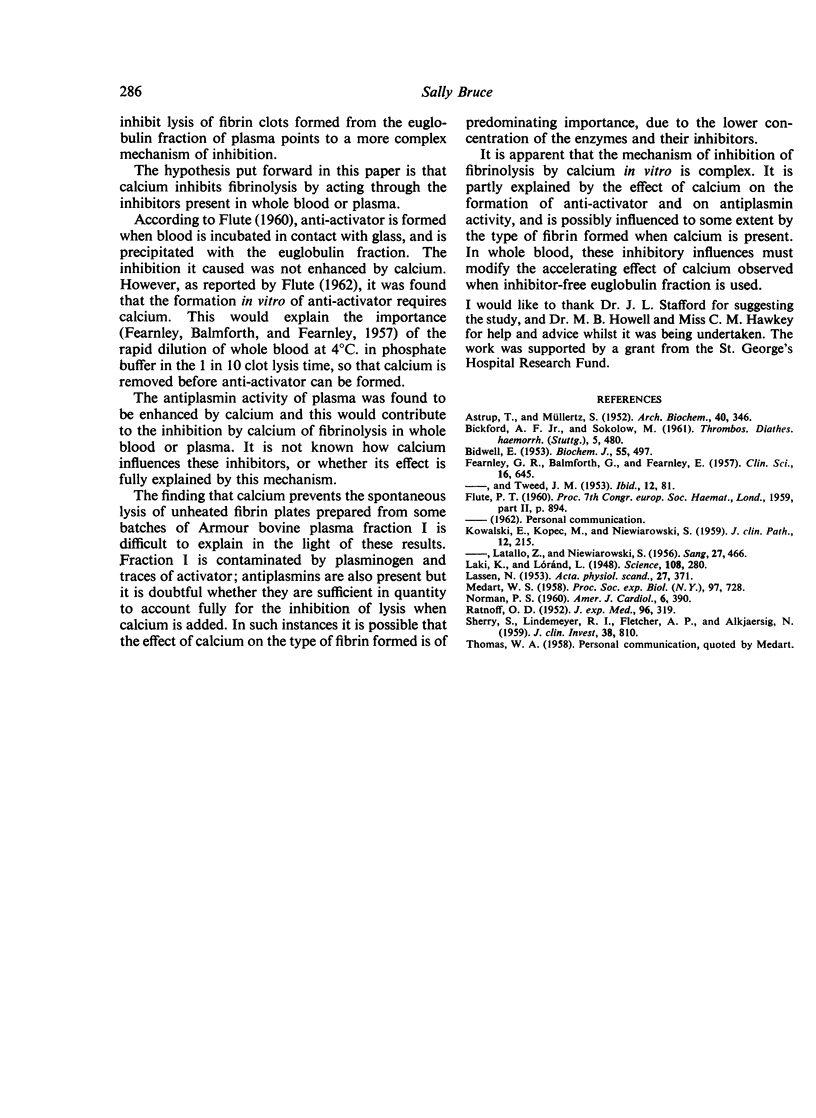
Selected References
These references are in PubMed. This may not be the complete list of references from this article.
- ASTRUP T., MULLERTZ S. The fibrin plate method for estimating fibrinolytic activity. Arch Biochem Biophys. 1952 Oct;40(2):346–351. doi: 10.1016/0003-9861(52)90121-5. [DOI] [PubMed] [Google Scholar]
- BIDWELL E. Fibrinolysins of human plasma; a comparison of fibrinolytic plasma from normal subjects and from cadaver blood with plasmin prepared by activation with chloroform. Biochem J. 1953 Oct;55(3):497–506. doi: 10.1042/bj0550497. [DOI] [PMC free article] [PubMed] [Google Scholar]
- FEARNLEY G. R., BALMFORTH G., FEARNLEY E. Evidence of a diurnal fibrinolytic rhythm; with a simple method of measuring natural fibrinolysis. Clin Sci. 1957 Nov;16(4):645–650. [PubMed] [Google Scholar]
- KOWALSKI E., KOPEC M., NIEWIAROWSKI An evaluation of the euglobulin method for the determination of fibrinolysis. J Clin Pathol. 1959 May;12(3):215–218. doi: 10.1136/jcp.12.3.215. [DOI] [PMC free article] [PubMed] [Google Scholar]
- KOWALSKI E., LATALLO Z., NIEWIAROWSKI S. Influence des ions métalliques sur l'activité de la plasmine. Sang. 1956;27(5):466–475. [PubMed] [Google Scholar]
- LASSEN M. Heat denaturation of plasminogen in the fibrin plate method. Acta Physiol Scand. 1953 Feb 28;27(4):371–376. doi: 10.1111/j.1748-1716.1953.tb00951.x. [DOI] [PubMed] [Google Scholar]
- Laki K., Lóránd L. On the Solubility of Fibrin Clots. Science. 1948 Sep 10;108(2802):280–280. doi: 10.1126/science.108.2802.280. [DOI] [PubMed] [Google Scholar]
- MEDART W. S. Effect of divalent cations on proteolysis of fibrinogen. Proc Soc Exp Biol Med. 1958 Apr;97(4):728–730. doi: 10.3181/00379727-97-23860. [DOI] [PubMed] [Google Scholar]
- NORMAN P. S. Some aspects of the chemistry of plasmin and its inhibitors. Am J Cardiol. 1960 Aug;6:390–398. doi: 10.1016/0002-9149(60)90330-1. [DOI] [PubMed] [Google Scholar]
- RATNOFF O. D. Studies on a proteolytic enzyme in human plasma. VIII. The effect of calcium and strontium ions on the activation of the plasma proteolytic enzyme. J Exp Med. 1952 May;95(5):319–329. doi: 10.1084/jem.96.4.319. [DOI] [PMC free article] [PubMed] [Google Scholar]
- SHERRY S., LINDEMEYER R. I., FLETCHER A. P., ALKJAERSIG N. Studies on enhanced fibrinolytic activity in man. J Clin Invest. 1959 May;38(5):810–822. doi: 10.1172/JCI103863. [DOI] [PMC free article] [PubMed] [Google Scholar]


